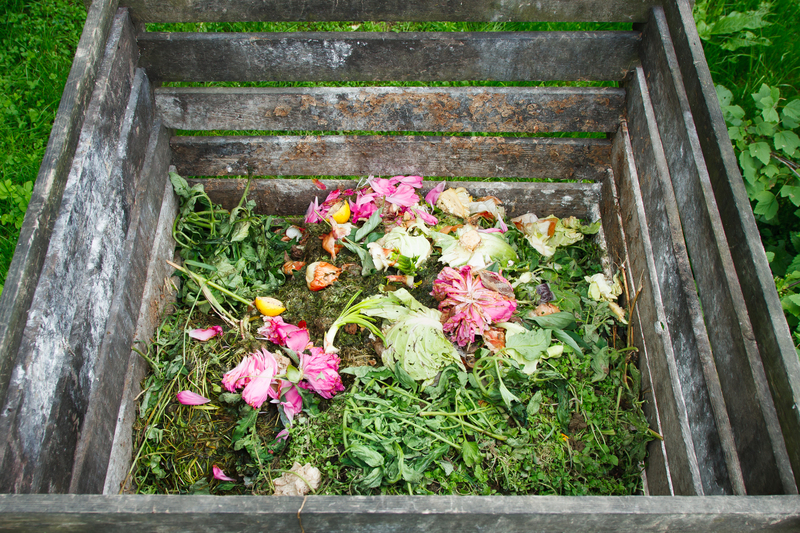Smart Strategies for Responsible PPE Waste Disposal
Personal Protective Equipment (PPE) has become an essential part of our daily lives, especially in the wake of global health challenges. Despite its life-saving benefits, the surge in PPE use has led to a new environmental and waste management crisis. From discarded face masks to single-use gloves, the volume of PPE waste is skyrocketing in both healthcare settings and public spaces. Adopting smart strategies for responsible PPE waste disposal is now more important than ever--not just for cleanliness, but also for environmental sustainability and public health.

Why Responsible PPE Waste Disposal Matters
The improper disposal of PPE like masks, gloves, and face shields poses numerous risks. These items often end up in oceans, streets, parks, and landfills, creating hazards for wildlife, spreading infection, and contributing to pollution. As many PPE components are made from plastics and other non-biodegradable materials, they persist in the environment for years, breaking down into microplastics that harm ecosystems and even enter the human food chain.
- Environmental impact: Millions of PPE items disposed of daily are adding to plastic pollution.
- Public health concerns: Littered PPE can carry and transmit pathogens, increasing the risk of disease spread.
- Resource wastage: Many PPEs are single-use, amplifying waste challenges.
- Economic costs: Local governments pay more to clean up and safely dispose of improperly discarded PPE.
It is imperative to adopt smart and responsible strategies for PPE waste disposal to address these challenges efficiently.
Key Strategies for Effective PPE Waste Management
So how can individuals, hospitals, businesses, and governments improve their PPE waste disposal methods? Here are comprehensive, actionable strategies to support cleaner, greener, and safer communities.
1. Segregation at Source: The First Step
Proper segregation is the cornerstone of effective waste management. Separating PPE waste from general waste minimizes cross-contamination and streamlines the disposal process.
- Designate specific bins: Place clearly labeled bins for PPE waste in public areas, workplaces, and healthcare facilities.
- Educate users: Use simple signage to show what items go where and the risks of mixing PPE with regular trash.
- Colour coding: Adopt international or local color-coding standards (such as red or yellow bins) for clinical or infectious waste.
2. Safe Handling Practices
Handling PPE waste requires care. Both in domestic and healthcare settings, strict guidelines should be followed:
- Never touch used PPE directly: Always use gloves and wash hands after handling.
- Double-bagging: For potentially infectious PPE, place items in one bag and then into a second bag to reduce exposure.
- Seal bins: Use bins with tight-fitting lids to contain odors and prevent animals or children from accessing the waste.
3. Implementing PPE Recycling Initiatives
Traditional PPE items are single-use and made from mixed materials, complicating recycling. However, innovations in recycling methods mean some PPE can be repurposed or processed:
- Thermal technologies: Advanced recycling technologies, such as pyrolysis and sterilization, convert PPE waste into reusable raw materials or fuel.
- Specialized recycling programs: Some organizations and companies now offer collection and recycling programs for face masks and gloves.
- Encourage manufacturer responsibility: Support Extended Producer Responsibility (EPR) programs, where manufacturers take back used PPE for recycling.
4. Promote the Use of Reusable PPE
Switching to high-quality, washable, and reusable masks or protective gear, where possible, is an excellent way to reduce PPE waste generation at the source.
- Encourage use of fabric masks for the general public, saving medical-grade PPE for healthcare workers.
- Educate about the proper cleaning and maintenance of reusable PPE to ensure safety.
- Organizational policies: Support businesses in subsidizing or providing reusable PPE to staff.
5. Raising Awareness & Education
Audience education is pivotal for responsible PPE waste disposal. A simple lack of understanding often leads to careless littering or improper segregation.
- Public campaigns: Use online platforms, social media, and local signage to inform about proper PPE waste handling and disposal.
- Institutional training: Implement mandatory training for healthcare, cleaning, and waste management staff.
- School programs: Involve youth in recycling and disposal education to foster long-term good habits.
6. Harnessing Smart Waste Management Technologies
Smart technology can transform PPE waste disposal:
- Sensor-enabled bins: Track fill levels and optimize collection schedules, reducing overflow and spillage risk.
- QR code tracking: Trace PPE waste from source to treatment, ensuring transparency and liability.
- Mobile apps: Enable users to find the nearest PPE waste bin or recycling facility.
The adoption of these innovative PPE waste disposal solutions helps streamline operations and supports municipal waste management authorities in data-driven decision-making.
Responsible PPE Waste Disposal in Healthcare Facilities
Hospitals and healthcare centers are at the frontline of PPE usage and waste generation. Smart management of medical PPE waste protects not only healthcare staff and patients, but the wider community.
- Strict compliance with local, national, and WHO regulations regarding clinical waste disposal.
- On-site disinfection (autoclaving, microwaving, or chemical treatment) of infectious PPE waste before final disposal.
- Detailed record keeping of PPE waste quantities, processing steps, and final destination.
- Ensuring staff safety by providing training, PPE for handlers, and vaccination where necessary.
- Engage licensed contractors for safe transport and final incineration or landfill as required.
Best Practices for Businesses and Public Spaces
- Install PPE waste stations at building entrances, exits, and high-traffic areas.
- Communicate policies by using signs reminding visitors to dispose of PPE responsibly.
- Reduce usage: Assess operations to minimize unnecessary PPE consumption (e.g., switch to barrier shields where possible).
- Partner with recyclers or specialist disposal companies experienced in PPE waste management.
The Role of Policy and Regulation in PPE Waste Disposal
Governments, regulatory bodies, and international agencies have a vital role in setting standards, enforcement, and funding:
- Update legislation to reflect the specific risks of PPE waste and mandate responsible management at all levels.
- Support R&D in biodegradable PPE and recycling technologies.
- Launch incentives for hospitals, schools, and businesses adopting advanced disposal and recycling solutions.
- Penalize improper disposal by issuing fines and running public awareness campaigns.
By creating clear frameworks and supporting infrastructure, authorities can drive more responsible PPE waste management practices across society.
Innovative Approaches to PPE Waste Disposal
Biodegradable PPE
Exciting research is underway to develop biodegradable PPE--including masks, gloves, and gowns made from plant-based or compostable materials. These reduce the burden on landfills and lessen environmental harm.
Upcycling and Repurposing
Creative solutions involve transforming clean, non-infectious used PPE into new products, such as:
- Construction materials (bricks, roads, insulation).
- Plastic pellets for manufacturing.
- Art installations--raising awareness about environmental impact.

Challenges & Considerations
- Contamination risk: Most used PPE is considered potentially infectious, making recycling and upcycling more complex.
- Lack of infrastructure: Not all regions have access to specialized disposal or recycling facilities.
- Cost factors: Advanced treatment methods can be expensive; however, innovation and demand are driving prices down.
- Behavioral change: Changing community habits requires persistent education and incentives.
How Individuals Can Contribute to Smart PPE Waste Disposal
- Dispose of single-use PPE in the designated bin--never litter or flush down toilets.
- Switch to reusable, washable masks whenever possible.
- Stay informed about new disposal and recycling options in your area.
- Advocate for better disposal facilities in your community or workplace.
- Educate others--spread the word among friends, peers, and family.
Conclusion: Towards a Greener and Safer Future
The global surge in PPE usage is unlikely to subside any time soon. By adopting smart, responsible, and innovative PPE waste disposal strategies, we can mitigate environmental damage, reduce health risks, and conserve resources for future generations.
Whether you are a healthcare professional, business owner, policymaker, or simply a conscientious consumer, your actions matter. Segregate, handle safely, recycle where possible, choose reusable options, educate, and advocate--every step counts. Let us work together to create a safer, cleaner, and more sustainable world, starting with the smart management of PPE waste.
If we act collectively and diligently today, we can ensure that our crucial protection tools do not become tomorrow's pollution problem.
